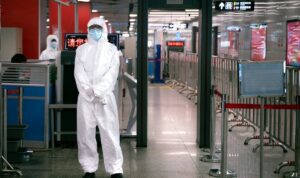
The share prices of all 10 Ukrainian agricultural holdings listed on the Warsaw and London stock exchanges fell in 2022, the fall was from 1.4 times for Ukrproduct to 3.15 times for Kernel.
It follows from the data of the relevant stock exchanges that all Ukrainian agricultural companies have been significantly affected by the Russian military invasion and the negative consequences for the economy of the country caused by it. At the same time, their territorial location did not play a decisive role – the shares of Agroton, whose land bank was occupied by the Russians, fell in price by 1.86 times, while the shares of Milkiland, which did not fall under the occupation, fell by 2.5 times.
According to the exchange, over the period from January 1, 2022 to January 6, 2023, the Ukrainian agricultural companies’ securities fell in price as follows
“Ukrproduct – 1.4 times, to $3.25 (PLN14.3) from $4.5 (PLN19.8).
“Ovostar – 1.52 times, to PLN44.8 from PLN68;
KSG Agro – 1.73 times, to PLN2.21 from PLN3.84;
MHP – 1.81 times, to $3.7 (PLN16.28) from $6.72 (PLN29.7).
“Astarta – 1.83 times, to PLN22.2 from PLN40.55;
“Agroton – 1.86 times, to PLN3.62 from PLN6.76.
“IMC” – 1.92 times, to PLN16.6 from PLN32.
“Milkiland – 2.5 times, to PLN0.9 from PLN2.25;
“Agroliga – 2.66 times, to PLN19.9 from PLN53.
“Kernel – 3.15 times, to PLN18.49 from PLN58.3
Thus, the shares of five of the 10 holdings have fallen in price by 1.73-1.92 times for the year, which allows us to judge roughly the average range of decline in the industry.

The National Bank named the first issue of domestic government bonds (OVGZ) – benchmark OVGZ with which banks will be able to form up to 50% of the increased required reserves – this issue (ISIN UA4000227045) maturing August 7, 2024, which the Ministry of Finance first placed at an auction on January 3.
“According to estimates of the NBU, such a step will contribute to a more active participation of banks in the primary market of government bonds and, as a result, prevent the emission financing of the budget deficit in 2023 and the absorption of part of the free liquidity of the banking system,” the central bank said in a statement on its website on Friday.
According to it, the NBU adopted the relevant decision № 7 on January 5, it comes into force on January 10.
Only one buyer bought the securities at the initial auction on January 3 – for 1.077 billion hryvnyas at 19.25% per annum.
As earlier reported, on December 8, the NBU announced that from January 11 it will raise the required reserve ratio for current accounts (demand deposits) in UAH and foreign currency by 5 p.p. – The bank will allow to cover up to 50% of the total volume of the required reserves at the expense of benchmark OVDPs.
The mandatory reserves for the period from December 11, 2022 to January 10, 2023 amount to UAH 69.76 billion, while the volume of banks’ funds in certificates of deposit is about UAH 466 billion.
According to estimates of the National Bank, such a decision will allow the Ministry of Finance to attract an additional UAH 50 billion.
In the Memorandum with the IMF on the Monitoring Program with the Board of Directors it was stated that over 60% of the OVDP-benchmarks will be new securities, while up to 40% will be already circulating in the market with maturity after January 1, 2024.
Currently, the Ministry of Finance lists 10 issues of benchmark OVDPs on its website, of which the National Bank has so far recognized only one new issue listed above. In addition, the Ministry of Finance lists three more issues maturing in 2023, three in 2024: in February, May and October, and one each maturing in 2025 (in February), 2026 (in May) and 2027 (in May).

The head of the parliamentary committee on foreign policy and interparliamentary cooperation, Oleksandr Merezhko (Sluzha Naroda faction) has decided to run for president of the Parliamentary Assembly of the Council of Europe for 2023.
“I am sincerely grateful to my colleagues for supporting my decision to run for president of the Parliamentary Assembly of the Council of Europe,” Merezhko said on Facebook on Saturday.
According to the people’s deputy, one of the points of his election program is restoration of democracy inside PACE: “Anti-democratic system of presidential elections, which exists now, and which is, in fact, elections without elections, should be replaced by real competitive elections”.
Merezhko also believes that PACE “must decisively get rid of any Russian or pro-Russian influence” and make these changes unavoidable, preventing a return to a policy of dialogue with Russia.
According to Merezhko, PACE must expand its human rights protection system and actively oppose human rights violations and crimes against human rights committed by countries that are not members of the Council of Europe.
Merezhko released a scan of a letter from MPs to the European inter-parliamentary organization supporting his nomination as a candidate for PACE president.

Chinese authorities on Sunday began lifting border crossing restrictions in China that have been in place since the start of the COVID-19 pandemic, Bloomberg reported.
So, starting Jan. 8, individuals arriving in China will no longer need to go into quarantine after arriving in the country. However, 48 hours before arrival they will be required to obtain a negative test result for COVID-19 and present it to the PRC.
On Sunday, Chinese authorities also began issuing ordinary visas and temporary residence permits to foreigners. At the same time, residents of mainland China can again obtain passports and tourist visas.
However, according to the Associated Press, only a very limited resumption of China’s international air traffic can be expected for the time being.
Also on Sunday, authorities resumed passenger service on land and sea routes between the Chinese mainland and the Hong Kong special administrative region. Travelers, however, will need negative COVID-19 tests 48 hours before travel. The government has also imposed restrictions on the daily number of people who can travel between mainland China and Hong Kong.
The lifting of many travel restrictions came into effect after China began its annual 40-day travel period the previous day to coincide with the Lunar New Year, which this time falls on January 22, 2023. At this time, China is experiencing the world’s largest annual migration of its population, as they disperse to their homelands or travel around the country with relatives.
Since 2020, China has had a “zero tolerance” policy for COVID-19, which has meant applying measures such as lockdowns and mandatory quarantine for those who come into contact with infected people. At the same time, the Chinese economy was showing the lowest growth rate in almost fifty years. But in December, Chinese authorities lifted a series of restrictions adopted to contain the spread of the virus, causing a spike in illnesses and deaths.
The United States, the United Kingdom, India, Japan, Italy, Spain, Canada, Australia, Germany and Sweden announced some restrictive measures against travelers from China amid the COVID-19 wave. In particular, they decided to require all persons arriving from the PRC to present a negative test for COVID-19.
According to Worldometers, a portal that specializes in statistics on major world events, China has diagnosed approximately 482,000 cases of the coronavirus and 5,200 deaths from the effects of infection throughout the pandemic.

Within the framework of joint Ukrainian-French initiative “Light during winter”, 23 communities in nine regions will receive two 5 kW generators each, the National Interest Defense Network (ANTS) reported in the press release on Friday.
To accomplish this task in late November, ANTS activists, together with the French NGO Stand with Ukraine, approached the Association of French Municipalities with a request to help purchase generators for Ukrainian communities.
The first generators were delivered to Ukraine on December 19. At that time, eight communities received generators with a capacity of 9 kW.
Today 46 more generators were brought to Ukraine from French communities. They were received by: Khotynska, Sadivska, Lebedynska, Krasnopolska, Baranivska, Volynska, Berezhanska, Tulchynska, Chortkivska, Trostyanetska, Nedryhaylivska, Pokrovska, Podgorodne, Dubovyka, Apostolivska, Novhorod-Severska, Novobasanska, Poromivska, Gorodnytska, Akhtyrska, Zolochivska, Drohobychska and Kremenchug communities.
Also in the near future, ANTC will deliver another 400 generators to other communities that it works with within the Community Restoration Project, which includes 30 communities in 10 regions of Ukraine. All of them were either under occupation or suffered from enemy attacks.
This “Strengthening Communities for Victory and Ukraine’s Recovery” project is supported by the U.S. Agency for International Development (USAID).

Ukraine’s international reserves as of January 1, 2023, according to preliminary data, amounted to $28.491 billion, an increase of 1.9%, or $536.4 million, compared to November 2022, thanks to currency inflows from international partners that exceeded NBU interventions to sell currency to support the fixed exchange rate.
According to the NBU on its website on Friday evening, they decreased by 7.9%, or $2.45 billion, for the year as a whole.
The National Bank specified that net international reserves in December increased by 3.3%, or $579 million – to $18.318 billion, but for the year they decreased by 11.8%, or $2.45 billion.
According to the regulator, in December, the dynamics of international reserves was affected by the state debt management operations. In particular, currency receipts to the accounts of the Ukrainian government in the NBU amounted to $4.468 billion in December, including $598.7 million from the EU, $2.03 billion from the U.S. through the World Bank Trust Fund, $540.7 million from placement of government bonds, $402 million from the World Bank, $367.8 million from the Canadian government and $528.9 million from other international creditors.
The total amount of payments of the government for servicing and repayment of government debt in foreign currency was $833.9 million, including $119.6 million directed to repay debt to international creditors and $714.3 million to service government bonds.
Besides, Ukraine transferred $166.2 mln to the IMF.
The international reserves were also affected by the NBU transactions at the interbank market. In particular, it sold $3.193 bln at the currency market and bought $29.6 mln to the reserves, due to which the interventions balance was negative $3.163 bln.
In addition, the reserves were affected by an upward revaluation of financial instruments by $231.6 mln.
According to the NBU, the current volume of international reserves provides financing for 3.6 months of future imports, which is sufficient to meet the obligations of Ukraine and the current operations of the government and the National Bank.
As reported, at the beginning of 2022, Ukraine’s international reserves stood at $30.941 billion, net international reserves (NIR) at $20.767 billion.